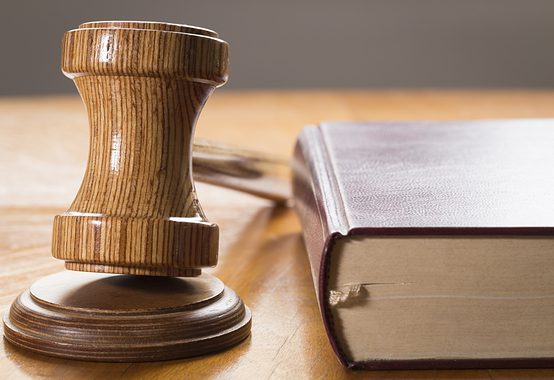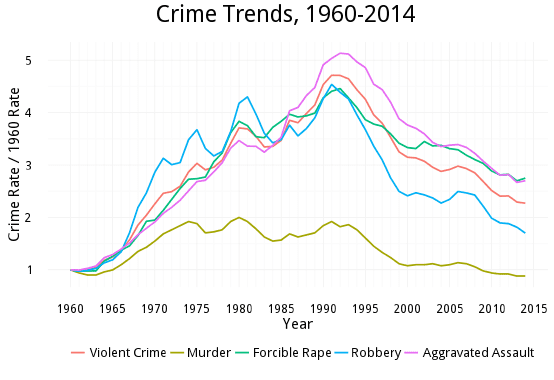Ripe Time for a Law-and-Order Candidate?

Liberals were wrong when they tried to minimize or deny the fact that crime is rising. It is. But has it reached apocalyptic proportions, as Trump implied last night?
According to preliminary CDC data, homicide rose about 8 percent between 2014 and 2015. (These numbers are more comprehensive than the big-city police-department data Trump relied on when he said 17 percent.) It seems to have continued rising this year, though all we have are big-city numbers to go off of. Violent crime in general ticked up about 1.7 percent between the first halves of 2014 and 2015.
That is important. But it’s not clear that Trump is encountering the same kind of electorate that Richard Nixon did—one aching for a major speech largely dedicated to “law and order.” It may have struck a nerve given the events of the past few weeks, but I don’t know what voters will think as they look back on it in November. It may depend on how many more horrific, high-profile events unfold between now and then.
Here are violent-crime rates based on police reports from 1960 to 2014, just before crime started rising again. Each rate is divided by the 1960 rate to show all the trends on the same scale.

Murder is actually back to its early-1960s level. Other crimes stand around where they did in the Nixon era, but it’s important to sort through the major reasons for the difference. One, medical advances stopped many from dying of stab and gunshot wounds; and two, murders are less affected by changes in reporting rates. It’s hard for police to ignore a dead body, but they never hear about a lot of other crimes, and reporting rates might be increasing.
If you look at the federal government’s victimization survey—which asks people if they’ve been the victim of a crime, regardless of whether they reported it, and defines its terms a little differently—you actually see pretty flat trends in violence, including serious violence, between the survey’s beginning in 1972 and the early 1990s when crime started to fall. So while police reports suggest we have the same violent-crime rates we had in the Nixon era, the survey data suggest rates have fallen by more than half.
Further, when Nixon ran, crime rates had doubled over the preceding decade; today, they’ve been climbing for just a year or two and fell precipitously for two decades before that. Voters have good reason to be anxious about rising crime, but not so mad they can’t take it anymore.
While Americans do seem to realize that crime is rising, practically none of them call it the most important issue today. Trump has an uncanny ability to put his finger on the pulse of the country—or at least certain parts of the country—but I wonder if he overestimated the salience of this issue, especially as we move past the primaries and into the general-election season.
Robert VerBruggen is managing editor of The American Conservative.
Follow @RAVerBruggen
Comments